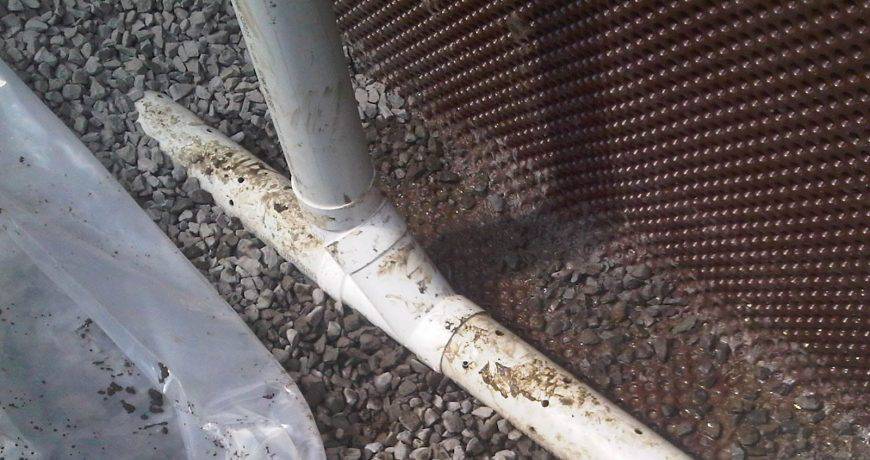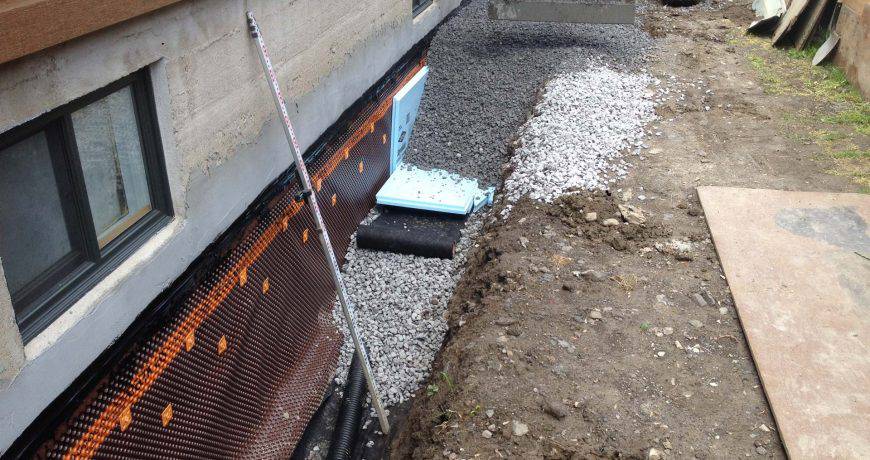French Drains
French Drain Inspection and Cleaning Service in Montreal
A correctly maintained French drain will effectively protect your property! Avoid building damage caused by moisture and water infiltration. Pavé IMH are experts in French drain inspection, repair and cleaning in Montreal. Our team of experts relies on advanced methods to keep your drainage system at top performance for as long as possible. Enjoy peace of mind thanks to Pavé IMH, your French drain specialists.
What is a French Drain?
A French drain is installed near the foundation of your building, where it plays a vital role in draining excess water to prevent infiltration. The system consists of a perforated pipe wrapped in a geotextile membrane. This filters sediments and draws water away from the walls to effectively prevent the formation of mold and cracks in the building foundation.

- NUnusual odors
- NHigh humidity in the basement
- NIf you detect one or more of these signs, it's time to replace your drain.

Signs that a French drain needs inspection, cleaning or repairs
Many factors can damage French drains, pipes and sewer lines. Iron ochre is one common cause of blockages. Accumulated grease, rust and limescale will also aggravate the problem. French drains need regular maintenance, including an inspection once every two years, to eliminate buildup, do any necessary repairs, and keep them working in top condition.
These are the signs that your French drain is getting too old :
- NEfflorescence (whit, chalk-like deposits) at the base of concrete walls
- NMold at the base of Gibbs surrounds on basement exterior walls
- NWet concrete slabs
- NWater accumulation around building foundations
Rely on specialists for French drain inspection, cleaning and repairs
Protect your building! At Pavé IMH, we know that a well-maintained French drain is your best defense against flooding and structural damage, especially during heavy rainfall. That’s why we offer advanced French drain inspection, cleaning and repair services. Trust us to help prevent blockages and avoid building damage with state-of-the-art techniques like high-pressure water blasting. Our services also include unclogging, and we use precise camera inspections for maximum efficiency.
Don’t let iron ochre compromise your drainage system. Our complete services include repairs, paver installation, excavation and high-pressure cleaning. With Pavé IMH, you can keep your building strong and secure for a long time.
Need a free quote?
With over 10 years of experience, Pavé IMH is a leading general contractor for French drain cleaning, inspection and repair in Montreal. We rely on advanced technologies and an extensive knowledge of local drainage systems. Our customized cleaning service will keep your French drain functioning efficiently for as long as possible!
Contact us today at 514-781-7283 or via our contact form to access our reliable Montreal French drain maintenance service. A clogged drain can damage your foundation and compromise the health of your home, but we will find it and fix it! We’ll also give you a custom estimate and answer all your questions. Our team is ready to provide an optimal service to keep your French drains healthy!
